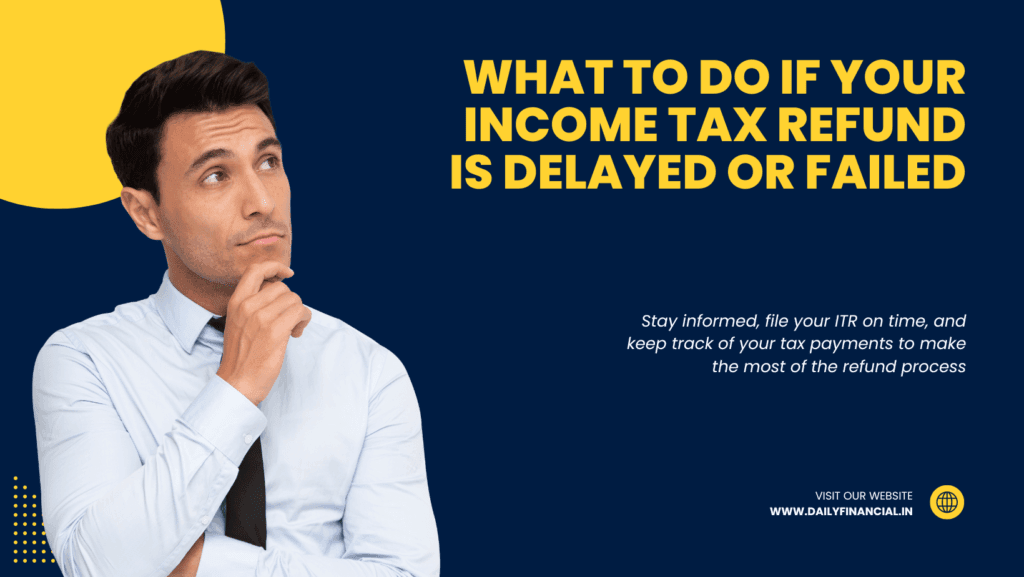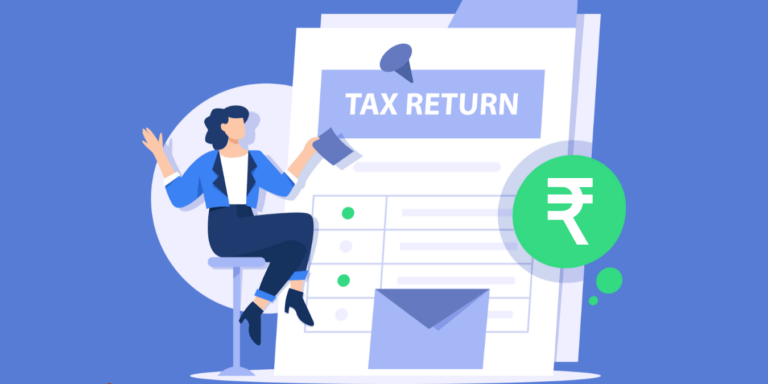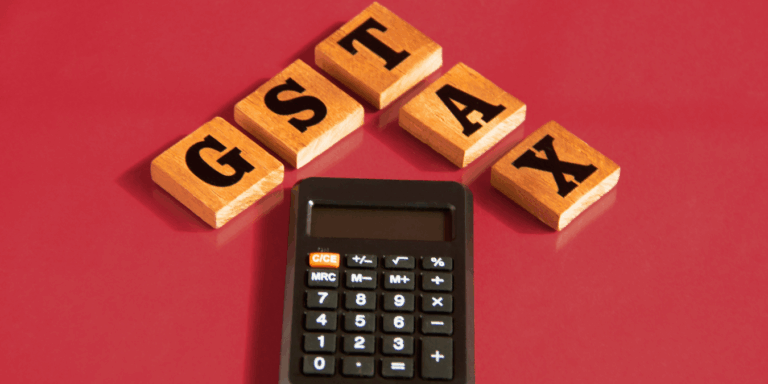
Why Your ₹30 Lakh Land Purchase Could Trigger a Tax Investigation—But Few Know How to Avoid It!
Buying land over ₹30 lakh in 2025? Discover why the Income Tax Department’s automatic alert could catch you off guard, triggering scrutiny few anticipate. Learn the critical steps to protect your investment and avoid costly tax troubles—before it’s too late. What hidden rule are most buyers missing?
Buying land above ₹30 lakh in 2025 is no longer just a “big milestone” purchase – it is a data point that instantly lands on the Income Tax Department’s radar, often before you even think about your ITR. What most buyers do not realise is that this one transaction can silently trigger multiple automated checks – SFT reporting, AIS flags, cash-compliance scrutiny and even reopening of past returns – without a single physical raid or visit.
The Hidden Trap: Why ₹30 Lakh is a “Magic” Number
Whenever you register a land or property deal of ₹30 lakh or more, the Sub-Registrar is legally bound under Section 285BA to file a Statement of Financial Transaction (SFT) in Form 61A to the Income Tax Department. This report is based on the higher of your sale deed value or the stamp duty valuation, so even if you “understate” the agreement value slightly, the circle rate can still push you over the ₹30 lakh threshold.
That entry then appears in your Annual Information Statement (AIS) and Form 26AS as a high-value transaction, ready to be matched with your declared income, bank records and earlier returns. In 2025, with advanced analytics, this isn’t passive data; it is live risk intelligence that can auto-generate scrutiny notices if your profile looks inconsistent with the property you are buying.
SFT, AIS and 360° Profiling: What Really Happens in the Backend
Section 285BA empowers specified reporting entities like Registrars, banks, NBFCs, mutual funds and others to report “specified financial transactions” above certain thresholds. For immovable property, this means any purchase or sale of ₹30 lakh or more – or where the stamp duty valuation hits that mark – must be reported by the registration authority.
Once filed, the property entry sits along with your other SFT data in AIS – like large bank deposits, big credit card spends, mutual fund investments or high-value cash transactions. The system cross-maps: your gross income in returns, TDS entries, property purchase, home loan EMIs, business turnovers and even previous-year patterns.
If something looks off – say a salaried person declaring ₹6–7 lakh annual income suddenly buys land worth ₹40–50 lakh with no visible loan – the system marks it for risk review and potential notice. That is why people often feel “targeted” after a land deal, but in reality the trigger was fully automated.
30L vs 50L: The Confusing Double-Threshold Most Buyers Forget
Here is one of the most misunderstood aspects: the ₹30 lakh and ₹50 lakh rules are not the same thing.
- At ₹30 lakh: SFT reporting by Registrar kicks in under Section 285BA, feeding your AIS/26AS.
- At ₹50 lakh: as a buyer, you must deduct 1% TDS under Section 194-IA on the higher of agreement value or stamp duty value and deposit it with the government.
Many buyers wrongly think: “My property is below ₹50 lakh, so I’m safe.” In reality, a ₹32–₹40 lakh land purchase is already visible in AIS even if no TDS is required, which means scrutiny can still happen if your income and funding pattern don’t match.
This dual-threshold structure is deliberately designed so that even “mid-ticket” property deals are tracked, not just luxury apartments.
Why Circle Rate Can Quietly Push You into the Danger Zone
Even if you “negotiate” a lower sale consideration and show, say, ₹28 lakh in the agreement, you are not necessarily below the radar. For SFT and for TDS, authorities consider the higher of:
Sale consideration declaredorStamp duty (circle) valueSale consideration declaredorStamp duty (circle) value
So if the circle rate-based value is ₹32 lakh but you register at ₹28 lakh, the Registrar may still treat the transaction as ≥₹30 lakh for reporting. That mismatch itself can become a red flag for under-reporting, and the difference between circle rate and declared consideration can later be taxed as unexplained income or trigger capital gains adjustments for the seller.
In 2025, as state governments revise circle rates more frequently in urban and semi-urban belts, more “bargain” deals unintentionally end up breaching the SFT threshold even when buyers think they are safe.
Urban Agricultural Land: The “Grey Zone” That’s No Longer Grey
A lot of Indians still believe “agricultural land” is outside the tax net, so buying it is harmless. The nuance is this:
- Rural agricultural land (beyond specified distance from municipal limits) is often outside capital gains tax and usually draws less scrutiny.
- Urban agricultural land (within notified municipal limits or specified radius) is treated as a capital asset, and its purchase and sale can be reportable and taxable like any other property.
Experts point out that even urban agri-land purchases above ₹30 lakh may be duly reported by Registrars into the SFT system. If you are a salaried or small business taxpayer suddenly buying “farm land” inside or near city limits at high value, expect the department to ask how you funded it and whether it aligns with your disclosed income and savings.
The 2025 Cash Crackdown: Why Mixing Cash and Property is Now Extremely Risky
The second silent hook after Section 285BA is the cash-transaction regime – primarily Sections 269SS, 269ST and related penalty provisions.
Key landmines:
- Receiving cash of ₹2 lakh or more from one person in a single day or for a single transaction/event is barred under Section 269ST, with penalty equal to the amount received.
- Accepting or repaying loans or deposits in cash of ₹20,000 or more can invite equal-amount penalties under Sections 269SS and 271D.
In 2025, the Supreme Court has gone further and directed that Sub-Registrars handling property deals with cash components of ₹2 lakh or more must report such transactions to the tax authorities, and failure by officers can trigger disciplinary action. This means that “adjusting” part of the land value in cash – even if both parties mutually agree – can directly land both buyer and receiver in a penalty situation, apart from the SFT flag via registration.
For buyers, this is a double blow: unexplained cash used in property can be taxed, while the very act of using cash beyond limits can itself attract equal-amount penalty.
How the Department “Matches” Your Land Purchase with Your Lifestyle
High-value land purchases are no longer seen in isolation; they are evaluated as part of your overall lifestyle and financial footprint.
Some typical cross-checks:
- Income vs. asset jump: Does your last 3–5 years’ income and wealth profile justify buying a ₹35–60 lakh plot without significant loans?
- Bank deposits and withdrawals: Do your bank statements show corresponding transfers, savings build-up or loans that align with the purchase date and amount?
- Loan pattern: If you’ve taken a home loan or personal loan, is the disbursement amount and EMI consistent with the property value in AIS?
If your declared income is modest but you have a pattern of high-value property, car, jewellery or luxury spends captured via SFT and TDS, risk scores go up sharply. In extreme cases, assessment can be reopened under Section 148 for income escaping assessment, and the officer can estimate income to the best of judgment if you don’t respond properly.
The Notice Chain: From Gentle Nudge to Full-Blown Reassessment
In most cases, the first step is not a raid but a digital nudge.
This can look like:
- A mismatch alert in AIS/Higher-value Transaction section asking you to confirm or explain the property entry.
- An e-compliance query asking “source of funds” for your land purchase, especially when it is disproportionate to your declared income.
If you ignore it or give vague, incomplete answers, things can escalate:
- Penalties for non-compliance with information requests – such as ₹100 per day under Section 272A(2) for not responding to certain notices.
- Full assessment or reassessment under Section 148, where the officer can reopen past years, re-compute income and tax unexplained investments.
By this stage, what began as a “routine purchase” can turn into years of litigation, blocked refunds, and reputational stress – all because the funding story behind your plot was not clean or properly documented.
Hidden Risk Zones: Gifts, Benami Patterns and Joint Names
Beyond straightforward purchases, some of the most sensitive cases in 2025 involve:
- Large “gifts” used for property: If parents or relatives fund your land purchase by gifting money, the gift may be tax-exempt in your hands, but the department can still ask them to show how they accumulated that money.
- Benami-like arrangements: Property funded by one person but held in another’s name without clear disclosed relationship or documented source of funds can invite scrutiny under benami law and unexplained investment provisions.
- Multiple small plots: Frequent purchases of several plots just around the ₹30 lakh mark, especially if your income is modest, can still be seen as structured attempts to avoid visibility.
The data systems now look at patterns, not just one-time transactions, so repeating “clever” structures is often counterproductive.
How to Bulletproof your ₹30L+ Land Purchase
For genuine buyers, the goal is not to avoid visibility – that is impossible – but to ensure that visibility does not translate into vulnerability.
Concrete steps:
- Use banking channels only : Route all payments via NEFT/RTGS/IMPS, cheque or approved loan disbursements; never mix in cash near or above statutory limits.
- Align agreement value with reality : Avoid under-reporting below circle rate to “save stamp duty”; the higher stamp value will still be considered for SFT and can create unexplained differences.
- Maintain a clear “funding trail” file : Keep a physical and digital folder holding bank statements, loan sanction letters, gift deeds, sale deeds of earlier assets sold, FD break-up proofs and any capital gains workings that funded the purchase.
- Clean up past returns before a big purchase : If you have undisclosed income in older years, buying a high-value plot now increases the chances of it being indirectly questioned via funding queries.
- Report correctly in ITR : Ensure the asset is shown in your balance sheet or capital schedule (as applicable) and that AIS data matches your declared information.
Doing this transforms a risky “exposed” transaction into a fully defensible one, even if you receive standard AI-generated queries later.
Smart Structuring Without Breaking the Law
There are also legitimate ways to structure land deals more tax-efficiently while remaining compliant.
- Use documented, interest-bearing loans: Funding through bank loans or well-documented loans from close family (transferred via banking channels, properly disclosed) is far safer than using undeclared cash.
- Time your purchase with known receipts: Align big purchases with events like maturity of long-term FDs, sale of another property, ESOP/bonus payouts or retirement benefits – so there is a clear, time-aligned source of funds trail.
- If buying with family, document shares: In joint purchases, clearly document who funded how much and how the asset will be split; this can avoid future disputes and scrutiny about “who really owns” the land.
None of this removes your SFT visibility, but it massively reduces the risk that the visibility will lead to additions, penalties or re-opened assessments.
Turning Anxiety into Confidence
For many Indians, land purchase is tied to deep aspirations – first family plot, future home site, or a retirement investment dreamed of for years. The fear of getting a tax notice can quickly convert that joy into anxiety, especially when viral posts and forwards warn that “IT will come after you for any land above ₹30 lakh.”
The reality in 2025 is more nuanced:
- Yes, the transaction will almost certainly be visible and analysed.
- No, visibility does not automatically mean harassment – provided your funding trail is clean and your documentation is tight.
Understanding the rules, building a proper paper trail and staying within cash limits can turn a scary, opaque process into something predictable and manageable, restoring that sense of pride and security in your investment.
Actionable Checklist Before Signing a ₹30L+ Land Deal
Before you sign or pay token money, run through this quick checklist:
- Is the circle rate pushing your effective value above ₹30 lakh even if the negotiated price is slightly lower?
- Is every rupee of your funding explainable through bank statements, loans, past savings or asset sales?
- Are you planning any cash component that could breach ₹2 lakh in a day or per person? If yes, restructure immediately.
- Do your last 3–5 years of ITRs reasonably support this level of investment?
- Have you planned how you will reflect the asset in your ITR and balance sheet next year?
If the answer to any of these is “no” or “not sure,” it is better to delay the deal by a few days and fix your structure than to spend years handling notices.
What this Means for 2025 – and What Might be Coming Next
The broader direction is clear: land and property are now central pillars of the tax risk system, and thresholds like ₹30 lakh and ₹2 lakh are designed as early-warning tripwires, not mere formalities. With each passing year, AIS becomes more granular, cash rules become tighter, and state registration offices become more deeply integrated with central tax databases.
The next wave is likely to involve even deeper analytics – linking property data with GST filings, digital payment trails, and even utility-bill patterns – making it harder for unexplained wealth to hide behind land deals. For genuine taxpayers, the advantage is that clean, well-documented transactions will pass through the system with minimal friction, while risky, cash-heavy, under-reported purchases will increasingly stand out.
So if you are planning to buy land above ₹30 lakh, the real question for 2025 is no longer “Will the IT Department know?” but “When they see this deal, will my financial story make perfect sense?” And as new rules and AI-based checks tighten further in the coming years, those who understand this today will be far better positioned than those who still treat registration as the end of the story instead of the beginning

































